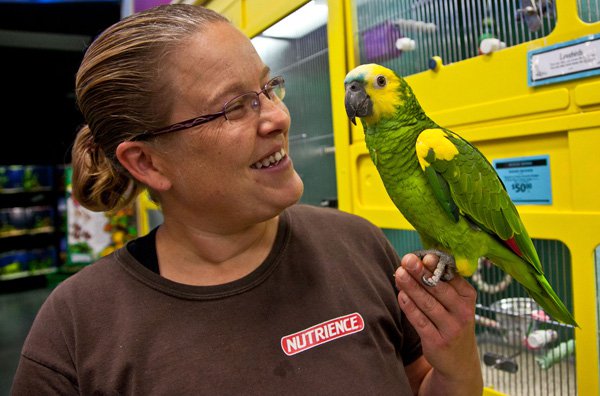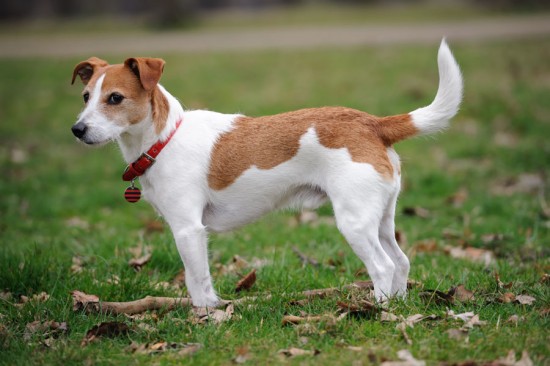





The elegant Doberman Pinscher is an fabulous looking dog and was given its name after the man you first developed the breed, Louis Doberman who needed a loyal and courageous guard dog to accompany him as he collected taxes from people. Temperament wise, the Doberman is the epitome of "man's best friend" being incredibly loyal and trusting as well as super obedient. But with this said, Dobermans are very clever and need to be well trained right from the word go otherwise they can be a little too dominant.
When it comes to health issues, the breed much like many other pedigree dogs, does tend to suffer from certain specific genetic health issues. One of which is Wobbler's syndrome which used to be known as "cervical spondylomyelopathy". The condition is rarely seen in young dogs but as Dobermans get older, it can start to develop. You may notice a few changes in the way your pet moves about which could be the first sign of the condition rearing its ugly head.
Wobbler's syndrome is a condition that develops due to an abnormality in the dog's spinal cord and although it is more usual to see older dogs, Dobermans as young as 3 years old may also show signs of Wobbler's which is first apparent when dogs get "wobbly" on their legs.
The symptoms of Wobbler's syndrome can be hard to spot at first because the condition develops very gradually. Your dog might appear to be a little uncoordinated and this is especially true of their back ends. They may start to walk with their legs splayed further apart and walk with a swaying motion. All too often the front legs are not affected by the condition in any way although, they may seem to be a little stiffer than normal on their front ends.
The other thing to watch for is whether your Doberman is reluctant to put their heads down because the condition does affect their necks too making painful for them to lower them. This means they may not even want to eat or drink and often show a lot of discomfort when they move their necks in any direction. Wobbler's syndrome can actually end up paralysing a dog but fortunately this is very rare indeed.
Vets typically take an X-ray of a dog's spine in order to determine whether they have indeed got Wobbler's syndrome. The X-rays will show if there are any bony growths on the dog's neck bones which is an indication they may be suffering from the condition. Vets may also want to perform other tests with includes using magnetic resonance imaging or they may even use a axial tomography scan which is the "CAT" scan that is used on dogs. These particular tests will show to what degree the spinal cord has been compressed which in turn would have affected the vertebrae in the dog's neck.
If a Doberman with Wobbler's syndrome is left untreated, the condition will gradually get worse. However, if your dog undergoes a medical treatment or surgical procedure, the condition can be controlled. Most Dobermans with Wobbler's would need to wear a harness when out on walks which means no pressure would be put on their necks when using a collar and lead.
Treatments include dogs being put on steroids and anti-inflammatory drugs but you would also be well advised to restrict the amount of exercise your pet is given. Interactive games like Frisbee or fly-ball would definitely be out of the question because this type of game could just end up exacerbating their condition. Vets would assess a dog's condition and the severity of the spinal compression before they would suggest any sort of surgical intervention.
Many Dobermans suffering with Wobbler's syndrome do not usually fully recover even after being treated for the condition whether it's medical treatment they are given or a surgical intervention. However, very often treatments do slow the condition down and sometimes prevents it from getting any worse. A dog's quality of life certainly improves after receiving the necessary treatment although many Dobermans still remain a little wobbly on their legs and have a strange gait for the rest of their lives.
If you have the time to spend with your Doberman, you might want to consider doing some physio therapy with them which really can help them get their balance back again although their gait will remain a little wobbly and they would still need to be walked in a harness rather than a collar.
As with a lot of pedigree dogs, Dobermans do tend to suffer from very specific health issues which you would need to know about if you are thinking of sharing your home with one of these proud looking dogs. Wobbler's syndrome is a condition that usually affects older dogs although Dobermans as young as three may also develop the disease. In very rare cases, Wobbler's can cause total paralysis but usually the condition is kept in check with the right sort of medication. Dogs go on to lead pretty happy lives as long as the amount of exercise they get is never too strenuous and really do benefit from receiving regular physio therapy.
 Some More Information On The Miniature Schnauzer
Some More Informa
Some More Information On The Miniature Schnauzer
Some More Informa
 Why Proper Dog Grooming Session is Important for Every Dog?
Why Proper Dog Grooming Session is Important for Every Dog
Why Proper Dog Grooming Session is Important for Every Dog?
Why Proper Dog Grooming Session is Important for Every Dog
 The Cut-throat & The Red-headed Finches
The Cut-throat &
The Cut-throat & The Red-headed Finches
The Cut-throat &
 All About Terriers
All About Terrier
All About Terriers
All About Terrier
 Mites And Other Parasites In Birds
Mites And Other P
Mites And Other Parasites In Birds
Mites And Other P
Copyright © 2005-2016 Pet Information All Rights Reserved
Contact us: www162date@outlook.com